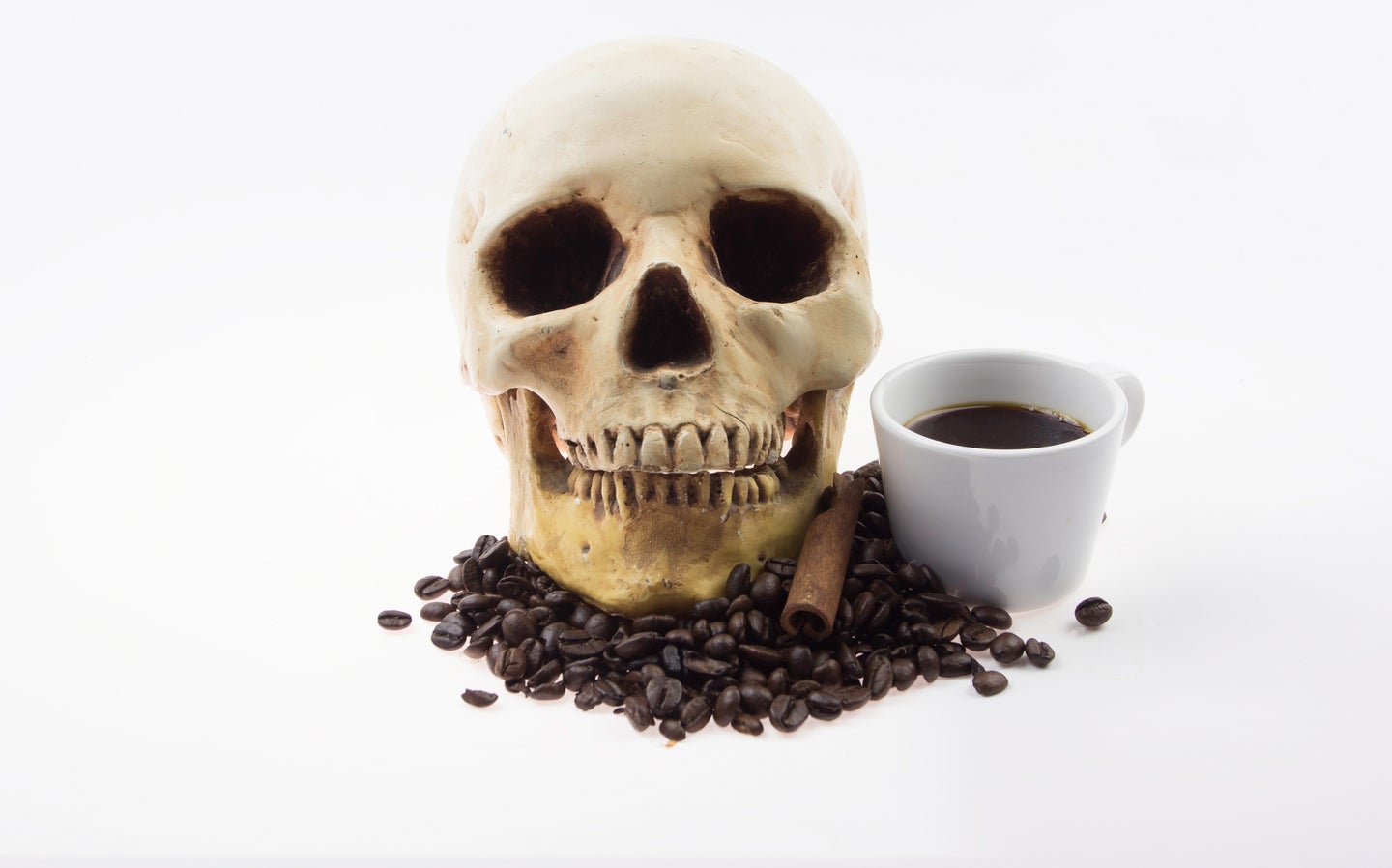Did a Swedish king really try to ban coffee with a deadly scientific experiment?
And the other weirdest things we learned this week.

What’s the weirdest thing you learned this week? Well, whatever it is, we promise you’ll have an even weirder answer if you listen to PopSci’s hit podcast. The Weirdest Thing I Learned This Week hits Apple, Anchor, and everywhere else you listen to podcasts every Wednesday morning. It’s your new favorite source for the strangest science-adjacent facts, figures, and Wikipedia spirals the editors of Popular Science can muster. If you like the stories in this post, we guarantee you’ll love the show.
This week’s episode features special guest James Harkin, head researcher for the TV show “QI” and cohost of No Such Thing As A Fish. James joined us in the studio while visiting NYC for NSTAAF’s latest tour to share the fascinating history of radium mania—the craze that had us turning everything from slippers to health tonics radioactive. For more info on the horrific aftermath of this trend, check out this article about the so-called Radium Girls.
FACT: Sweden has a long and complicated relationship with its favorite beverage
By Rachel Feltman
Coffee is a cornerstone of modern Swedish culture, influencing the country’s language and even workplace norms. In fact, Swedes rank among the top coffee consumers in the entire world. But this wasn’t always so—and not just because coffee comes from a plant originally grown in Ethiopia. Long after this stimulating bean found its way to Scandinavian shores, Swedish monarchs struggled to keep coffee from gaining a foothold.
Starting with a high tax on coffee and tea in 1746, King Adolph Frederick spent his life periodically implementing outright bans against caffeinated beverages. Likely motivations included a desire to protect the popularity of beer—which could be produced locally—xenophobia and racism against coffee’s earliest adopters, and a dislike of the sort of intellectual rabble-rousers who took to gathering in cafes. But as is so often the case, Frederick and his fellow coffee-haters hid behind a thin veneer of scientific respectability: The bans were often said to protect citizens from the drink’s deleterious effects.
That brings us to a story oft-referenced, but rarely cited. According to legend, Adolph’s son King Gustav III sought to make his father’s flip-flopping coffee bans stick by devising a sick experiment. He stayed the execution of two men sentenced to death, the story goes, under the condition that one drink copious amounts of coffee daily and the other stick to the same quantity of tea. Some versions of the tale say this “clinical trial” involved identical twins, which would be quite the advanced choice, scientifically (and would represent one extremely delinquent family), so I think it’s safe to say that detail at least is fabricated. Everyone sharing the story seems to agree that Gustav’s plan backfired, with the study subjects both living into their 80′s (long after the king himself perished) and the tea-drinker dying first.
In trying to confirm this story, I found several books that referenced it—and many articles that cited these books as sources. But where did the books themselves pick up records of the tale? That’s totally unclear. So while this story is a fun reminder that cherry-picking data to serve your own agenda will usually backfire, it’s also a fun reminder that books are rarely fact checked—and should never serve as your primary research source! Show me those sweet citations, nerds.
As for the verdict on coffee, it’s definitely not going to kill you, and might even do your body good. But caffeine is another story, so don’t overdo it.
FACT: Queen Nefertiti influenced (deadly) eye makeup trends in the 1920s
By Jessica Boddy
I was extremely jazzed when Glossier released their new eyeliner a few weeks ago. After picking some up and working on how to perfect my cateye technique, I began to wonder how many others throughout history have struggled with crafting precise, symmetrical lines around their eyes. How long has eyeliner been around, anyway?
It turns out, people were lining their eyes all the way back in Ancient Egypt. Essentially everyone—man or woman, rich or poor—used a dark, smudgy substance called kohl to do so. And it did more than just beautify Egyptians. Modern studies show it may have helped reflect the sun’s rays and repel dangerous bacteria.
When an egyptologist unearthed Queen Nefertiti’s bust in 1912, it sported her own signature eyeliner look, and she became an early influencer. Americans were obsessed with Nefertiti and King Tut, whose tomb was dug up shortly after. The 1920s were often known as Tut-mania, and trends of the decade had Egyptian influences. This, combined with makeup’s necessity in the emergent film industry, pushed wearing eyeliner, lipstick, and other products into the mainstream.
But such products were totally unregulated at the time—and some people went blind and even died before the FDA began (barely) regulating them. Listen to this week’s episode to hear some of the horror stories that ensued.
If you like The Weirdest Thing I Learned This Week, please subscribe, rate, and review us on Apple Podcasts (yes, even if you don’t listen to us on Apple—it really does help other weirdos find the show, because of algorithms and stuff) and fill out our new listener survey to help us bring our live shows on the road. You can also join in the weirdness in our Facebook group and bedeck yourself in weirdo merchandise from our Threadless shop.